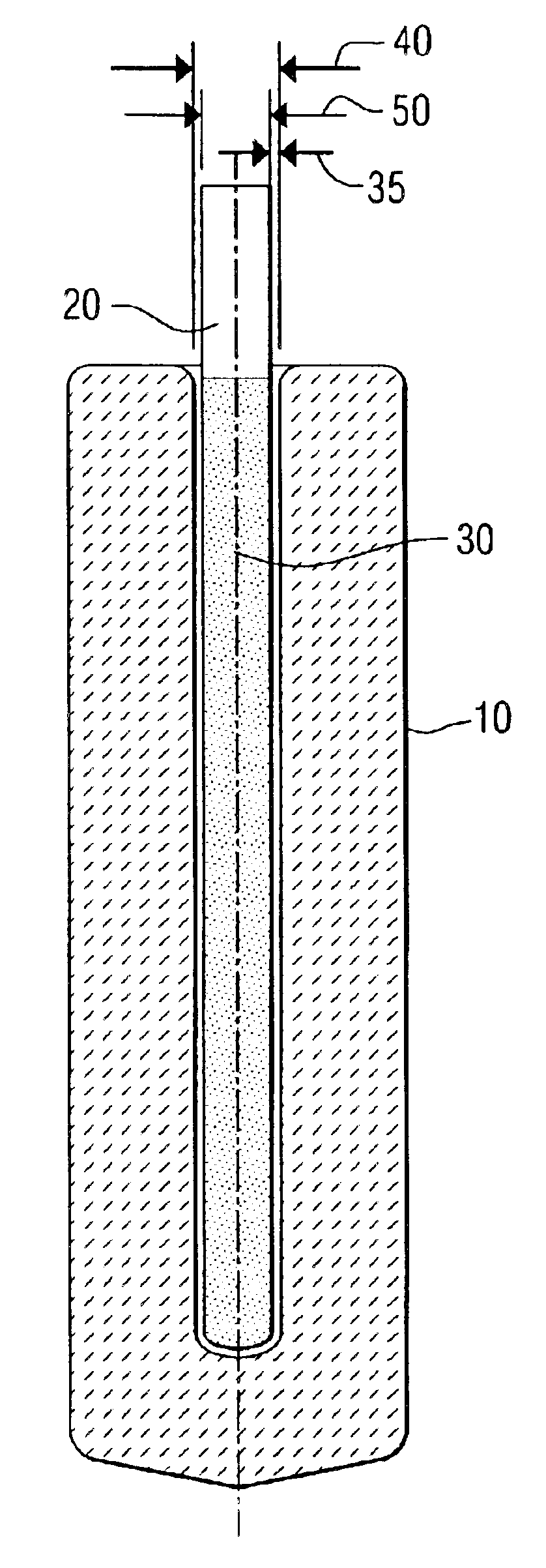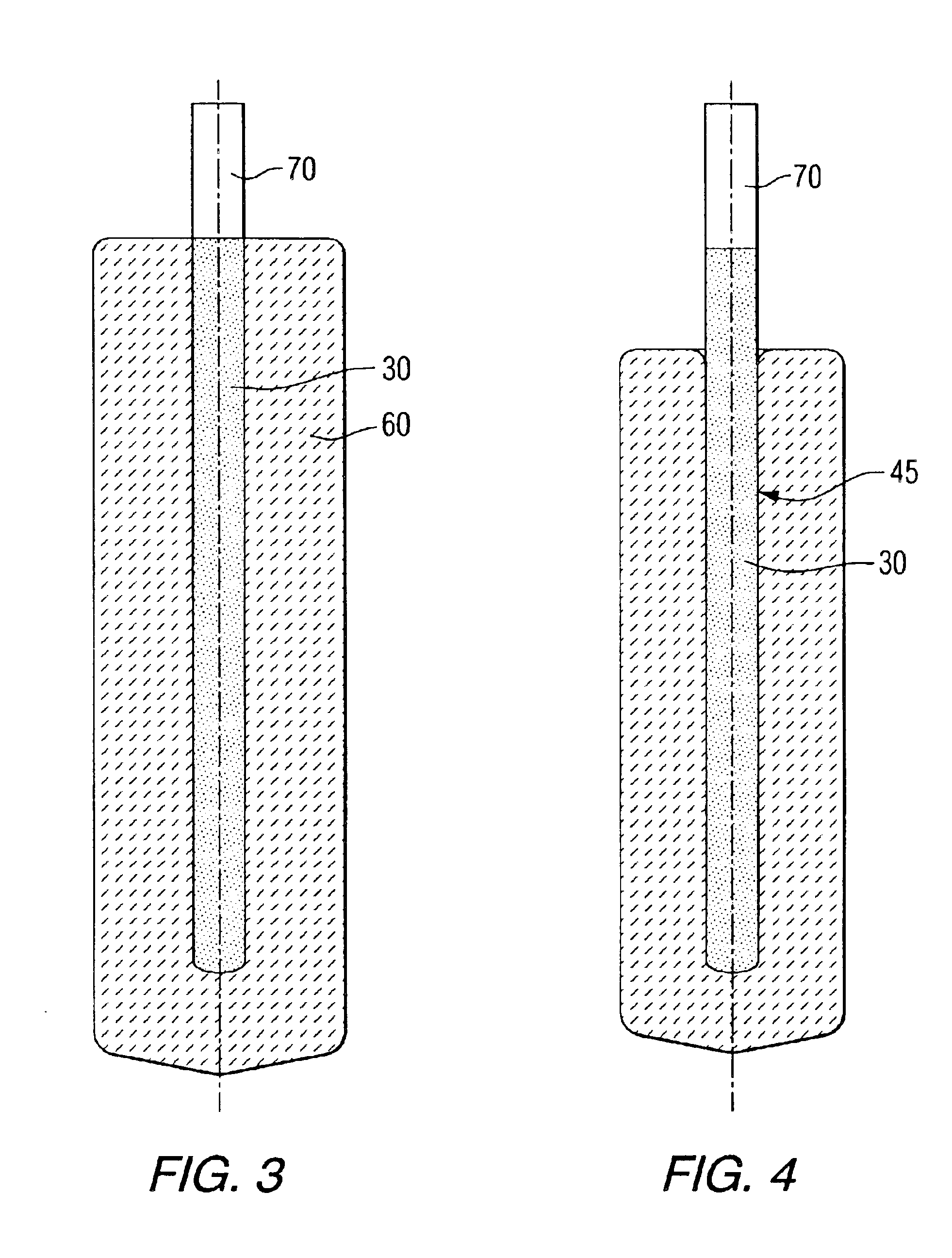Sinter-bonded direct pin connections for inert anodes
a direct pin connection and inert anode technology, applied in the direction of electrolysis components, manufacturing tools, separation processes, etc., can solve the problems of cracks, diffusion bonding, mechanical connection failure, etc., to reduce materials and assembly costs, improve electrical joint resistance, and avoid cracks
- Summary
- Abstract
- Description
- Claims
- Application Information
AI Technical Summary
Benefits of technology
Problems solved by technology
Method used
Image
Examples
example 1
An electrode assembly was prepared using a hollow inert anode, a metal conductor comprised of Inconel 600 alloy, and a coating on the conductor of a copper-nickel alloy. The anode was isostatically pressed from powder to have a hollow opening of 0.813 inches (2.06 cm) diameter. Anode porosity after pressing was about 40 vol. %. The pin diameter was 0.75 inches (1.9 cm) and the surface additive coating was applied as a flame spray to a thickness of 0.030 inches (0.076 cm) around the pin. The coating composition was 67.8 wt. % copper, 30.6 wt. % nickel with the balance Fe, Mn, Ti and other impurities. The anode was sintered at 1250° C. in an argon atmosphere until a full density, about 1 vol. % to 5 vol. % porosity was achieved. The concurrent shrinkage allowed the sintered anode material to come in contact with the pin and coating and establish a continuous, coherent electrical contact at the interface. The bonding was good enough to serve as a mechanical support. Final anode dimensi...
example 2
A series of 24 anodes were produced and tested in a statistically-designed matrix of experiments. The electrode assemblies were prepared using hollow inert anodes, a metal conductor, and an additive coating on the conductor. The conductor comprised a copper-nickel alloy. The anode was isostatically pressed from powder to have a hollow opening of various diameters. The coating composition was 67.8 wt. % copper, 30.6 wt. % nickel with the balance of Fe, Mn, Ti and other impurities. The anodes were sintered at 1250° C. in an argon atmosphere until a full density was achieved, about 1 vol. % to 5 vol. % porosity. The concurrent shrinkage allowed the sintered anode material to come in contact with the pin and coating and establish a continuous, coherent electrical contact at their interface. The bonding was good enough to serve as a mechanical support. Final anode dimensions were 6 inches long (15.24 cm) by 3 inches (7.62 cm) in diameter, with a hemispherical bottom.
The anodes were isost...
PUM
| Property | Measurement | Unit |
|---|---|---|
| Temperature | aaaaa | aaaaa |
| Temperature | aaaaa | aaaaa |
| Fraction | aaaaa | aaaaa |
Abstract
Description
Claims
Application Information
 Login to View More
Login to View More - R&D
- Intellectual Property
- Life Sciences
- Materials
- Tech Scout
- Unparalleled Data Quality
- Higher Quality Content
- 60% Fewer Hallucinations
Browse by: Latest US Patents, China's latest patents, Technical Efficacy Thesaurus, Application Domain, Technology Topic, Popular Technical Reports.
© 2025 PatSnap. All rights reserved.Legal|Privacy policy|Modern Slavery Act Transparency Statement|Sitemap|About US| Contact US: help@patsnap.com



